SKL is reader supported. When you buy through links on our site, we may earn affiliate commission. Learn more here.
Updated on April 3, 2024
Natural fertilizers can be a simple and safe way to nourish your indoor plants.
If you’re looking to make your own formula at home, these homemade fertilizers for houseplants will help grow beautiful and healthy plants.
P.S. Don’t forget to check out A Simple Guide To Composting At Home – Even In Small Spaces!
Natural homemade fertilizers for houseplants!
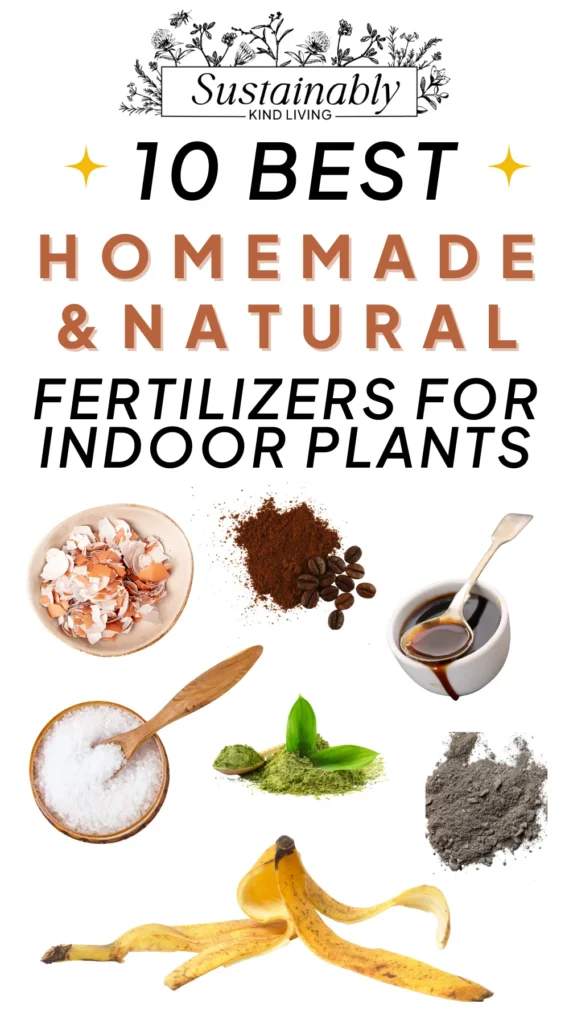
What is a natural fertilizer?
A natural fertilizer is a formula or product that has been made from organic materials and is free of manmade chemicals.
It’s added to soil to boost growth, improve foliage, and increase biodiversity around your garden. Natural fertilizers typically rely on ingredients like plant matter, minerals, and animal by-products for nutrients.
The best natural fertilizers contain nutrients like magnesium, phosphorus, potassium, sulfur, and calcium to maintain the health and structure of a plant and its surrounding soil.
These nutrients can be used to support the growth of beautiful tropical indoor plants that will give your home natural décor and color.
How do you make homemade fertilizer for houseplants?
In most cases, you can make a simple natural fertilizer by crushing, cutting, mixing, or dissolving the ingredients to create a solution that can be easily applied to your houseplants.
For faster absorption, banana peels can be cut up into smaller pieces while wood ashes may be scattered between several plants. With liquid fertilizers, pour into a spray bottle and apply regularly throughout the month for best results.
What is the best organic fertilizer for houseplants?
The best organic fertilizers are a combination of several ingredients that provide a balanced delivery of nitrogen, potassium, and phosphorus.
Crushed eggshells are great for adding calcium, while Epsom salts can deliver magnesium and sulfur. For a nitrogen boost, sprinkle gelatin powder or corn gluten meal. Used cooking water and molasses can provide a healthy dose of essential nutrients.
Best Organic Homemade Fertilizers For Indoor Plants:
1. Crushed Eggshells
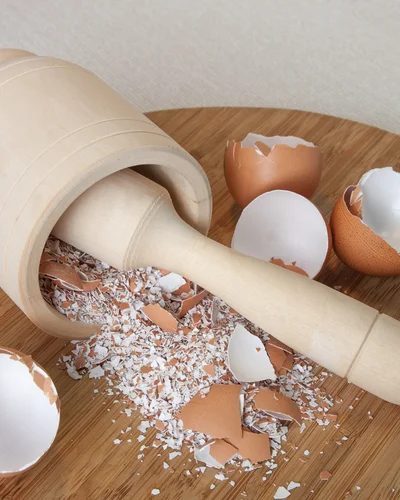
Eggshells are an excellent natural homemade fertilizer that provides calcium carbonate, which is one of the key ingredients in agricultural lime.
Lime increases the soil’s ability to retain water and balances any natural acidity.
Eggshells also contain high levels of nitrogen, phosphoric acid, and zinc to encourage root growth and ward off pests like snails and slugs that live within the soil.
Tip: Avoid adding too much powder as an overdose of lime can prevent the soil from absorbing crucial nutrients.
How To:
Simply crack open an egg and remove its contents. Rinse out the insides and leave your shells to dry thoroughly to prevent mold from forming.
You’ll need to wait until you have between 6 and 12 eggs in a carton before using it as fertilizer.
When you’re ready to create your homemade fertilizer, use a mortar and pestle or a rolling pin and carefully grind your eggshells into a fine powder.
Mix the powder gently into the soil or sprinkle it onto the soil surfaces of pre-potted plants.
2. Banana Peels
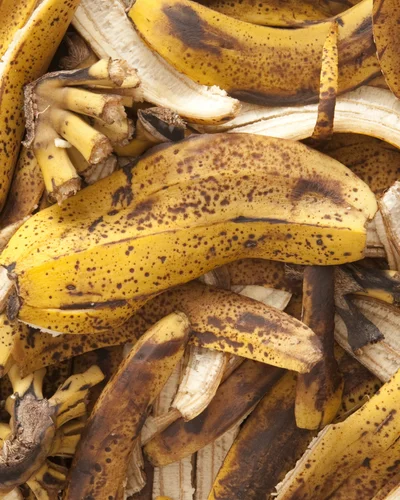
While you may consider throwing out banana peels, their potassium-rich skins make them a powerful homemade fertilizer for flowering plants like roses, tomatoes, and peppers.
This nutrient fortifies plant roots and helps them fight against disease and periods of drought throughout the year.
With food waste in the United States coming in at 108 billion pounds per year, discarded fruits and vegetable peels can easily be used to make fertilizer products.
How To:
There are a few ways to create banana peel fertilizer. The first option is to bury your peels in a hole approximately four inches below the ground alongside your plants and wait for the nutrients to seep into the soil.
Alternatively, you can puree the bananas in water to add to the soil or create a steeped solution of banana peels that can be poured directly over your plants.
3. Coffee Grounds
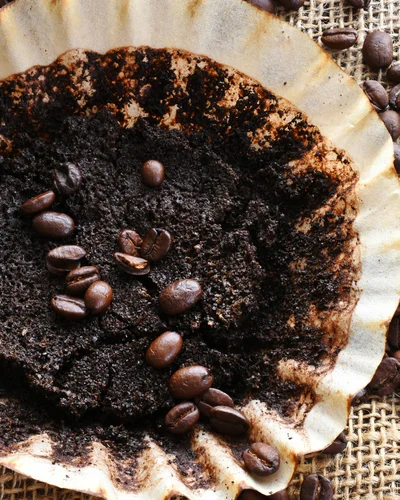
Leftover coffee grounds are loaded with nitrogen which is one of the major components of chlorophyll.
By creating homemade fertilizers with leftover grounds, you’ll be able to improve the circulation in your soil, boost drainage, and increase overall water retention for strong roots and healthy leaves.
Tip: It’s best to stick with a light coating to avoid adding too much caffeine or nitrogen to your soil over time.
How To:
It’s possible to add fresh beans to your soil if you’re trying to reduce PH levels, but it’s better to collect used coffee grounds throughout the week and spread them lightly over your soil to prevent mold.
If you prefer, add the coffee grounds to a small volume of water in a spray bottle and give your houseplants a quick once-over every month.
4. Green Tea
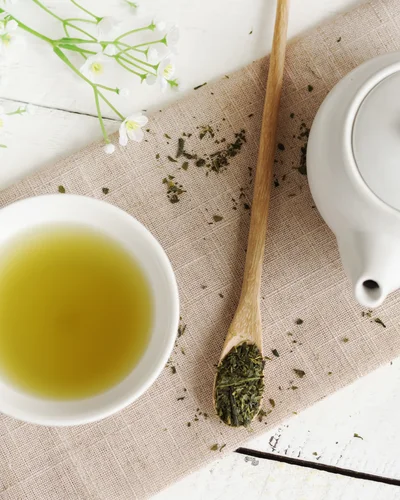
Green tea is one of the cheapest and most convenient ways to fertilize your houseplants!
Not only does it contain vital nutrients like calcium, magnesium, potassium, and phosphorus, but the green tea leaves decay slowly to provide long-lasting care to your plants.
Before brewing a cup of green tea, you’ll want to consider the kind of soil you’re working with.
As green tea is packed with tannic acid, it will naturally make your soil more acidic.
If you’re aiming for alkaline soil or are trying to keep it neutral, you may wish to stay away from green tea.
How To:
To create a green tea fertilizer, save a few tea bags after brewing and carefully open the bags over your soil once they’re cold.
Then, spread a light layer of the leaves over the houseplants and leave it to sit at the base of your soil.
If you’d rather create a liquid fertilizer, steep your old tea bags in water and pour or spray the resulting mixture over your soil. To create a stronger solution, simply steep your bags for longer.
5. Molasses
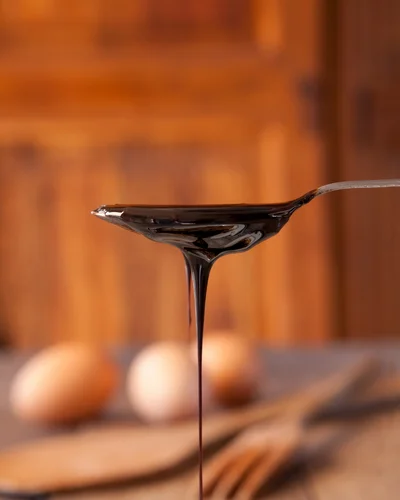
Molasses is one of the most popular homemade fertilizers that contains minerals and nutrients like potassium, iron, potash, copper, calcium, and nitrogen which help to fortify plant roots.
The high levels of sugar in this ingredient also produce brighter flowers and give plants and microorganisms in the soil the carbohydrates they need to thrive.
Tip: You can use light molasses for fertilizer, but blackstrap varieties contain far more nutrients and are generally better for plant life.
How To:
The easiest way to create this fertilizer is by filling a watering can and adding 1 part of Epsom salt and 2 parts of molasses to the mix.
You should only need around 2 tablespoons of molasses for every 2 gallons of water, but the key is getting the molasses syrup to fully dissolve.
Once you have the sugary mixture, pour it over the base of your houseplants without soaking them completely.
6. Epsom Salts
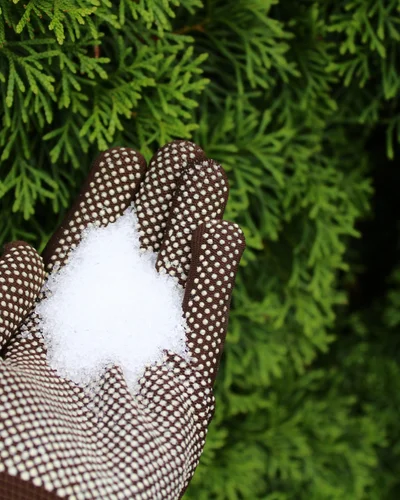
If your houseplants aren’t looking bushy enough or are failing to flower, they might be lacking vital nutrients like magnesium or sulfur.
To give your seeds a better chance of germinating and help improve chlorophyll production, you can use Epsom salts to give your houseplants a boost and prevent any unsightly yellowing edges.
Not only will the magnesium help your houseplants absorb nitrogen more easily, but it can even make your plants look greener over time, chase away pests, and neutralize the PH levels in your soil.
Just remember to use Epsom salts as an addition to your fertilizer program as it’s not designed to be a primary fertilizer.
How To:
To make the magic happen, add a couple of tablespoons of salt to a watering can containing a gallon of water. You can add the mixture directly to the soil once a month for the best results.
7. Wood Ash

Using wood ash from old bonfires or wood-burning fireplaces can be a great way to inject potassium, calcium, and trace minerals into your houseplant soil.
Although using wood ash isn’t as effective as fully-formed natural fertilizers like green tea, it’s a great option for increasing the alkalinity of your soil and repelling pests without using chemicals.
Tip: It’s important to keep a close eye on how much ash you’re adding, as excessive amounts of wood ash can produce lots of lye and salt over time which can negatively impact your houseplants.
How To:
If possible, stick to high-nutrient woods like maple and oak over softer woods like firs which won’t be as beneficial.
A light sprinkle of ash over the top of your soil should be more than enough to raise the PH of your soil.
8. Gelatin Powder
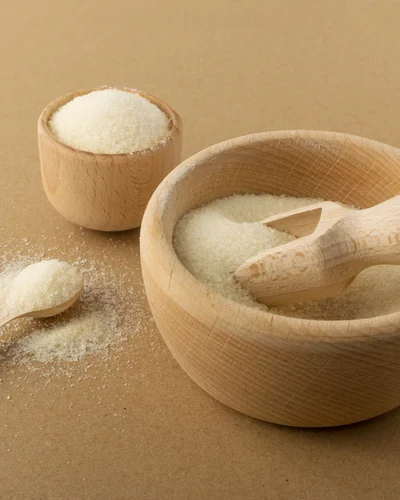
Unflavored gelatin powder is a natural and inexpensive way to add nitrogen, phosphorus, and potassium to your houseplant soil.
It’s classed as a non-polluting agent and has a top-notch amino acid profile that drives optimal growth for the roots and leaves.
Since gelatin is a slow-release powder, the nitrogen can also leach into the soil slowly to reduce the chance of mold.
Although you can use gelatin to boost several plants, it works particularly well for Boston ferns, African violets, and Monstera plants which have naturally large and lush foliage.
How To:
To make this cheap and easy homemade fertilizer, dissolve a single packet of gelatin into 1 quart of water.
You’ll need to use a mixture of warm and cold water for the solution to fully dissolve. For optimal growth, use the solution on your houseplants once a month.
9. Cooking Water
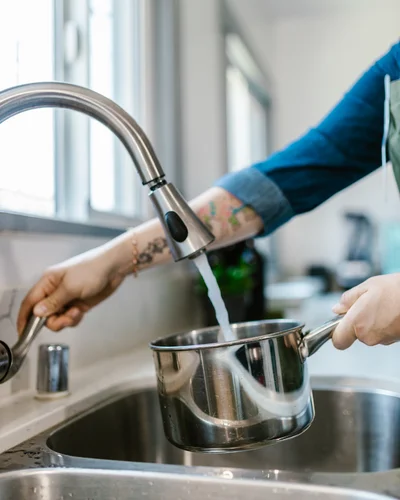
Not only can leftover cooking water spice up a pasta sauce and steamed veggies, but it’s also an excellent homemade fertilizer as it contains surplus carbohydrates, calcium, nitrogen, and phosphorus.
It’s one of the most cost-effective fertilizers you can make and enriches plant roots, promotes healthy bacterial growth, and boosts leaf shine.
Drip-feeding your plants with nutrient-rich cooking water should keep the soil moist and reduce the likelihood of leaf dullness.
You’ll want to be careful not to use leftover water that has been heavily salted as this can quickly kill your houseplants.
How To:
After boiling vegetables, eggs, pasta, rice, etc (unsalted), simply save the water, allow it to cool, and use it for watering the plants.
10. Aquarium Water
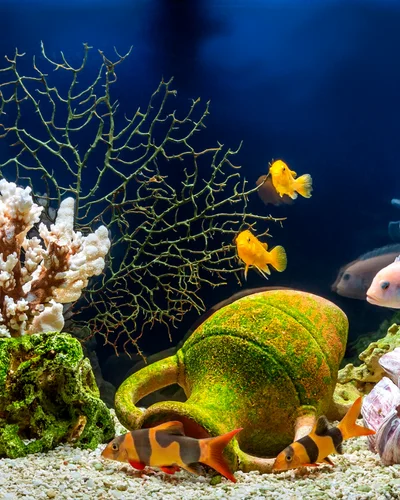
You might dread cleaning the fish tank, but enriched aquarium water is packed with friendly bacteria, trace nutrients, and ammonia that your flowering plants will adore.
It’s important to strike the right balance between keeping your fish healthy with regular cleans and scooping out the valuable fish manure that comes from a slightly dirty tank.
Tip: It’s also crucial to dilute the aquarium water if it’s overly concentrated, test the hardness of your water, and check for any chemical algae treatments that you may have done in recent months to avoid killing your plants.
How To:
You can scoop out water from your aquarium regularly if you have a large tank at home, but you should wait until the water is slightly dirty for smaller tanks.
This was your full guide to homemade fertilizers for houseplants!
Whether you want to grow a small fern, a peace lily, or a dragon tree for your living room, these homemade houseplant fertilizers can help you deliver the necessary nutrients to your indoor plants, accelerating their growth while maintaining a non-toxic environment in your home.
With a little effort, you can avoid kitchen waste and save money at the same time.
Author: Ana Ro is the founder and chief editor of Design Ideas Guide, an online publication focused on curating the best interior design and home decor ideas to create a happy living space.
If you enjoyed this article, check out these other community favorites below!
- A Simple Guide To Composting At Home – Even In Small Spaces!
- Is Gardyn Worth It? 5 Reasons To Love This Indoor Gardening System
- 15 Best Indoor Garden Systems | Tested & Reviewed
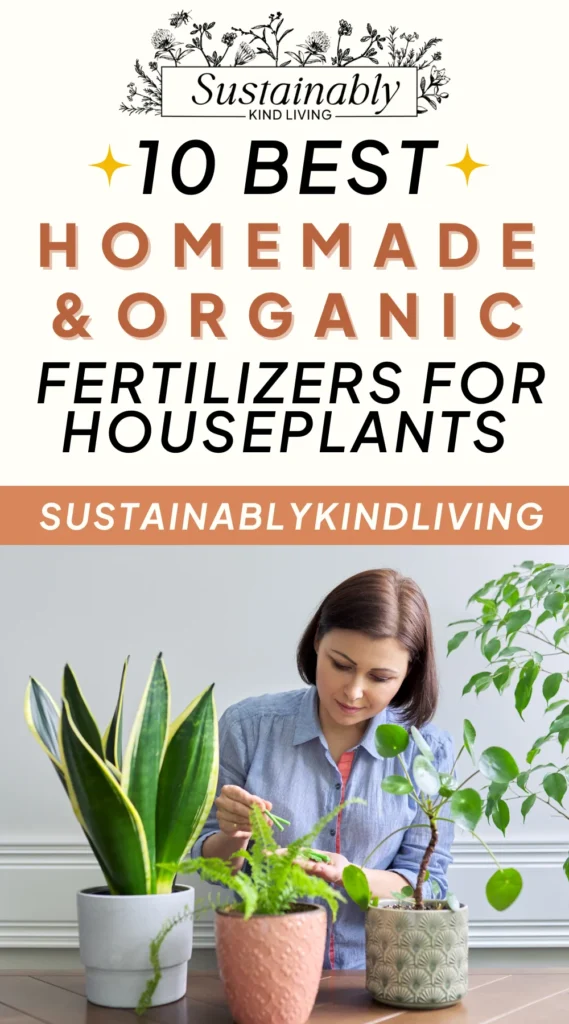





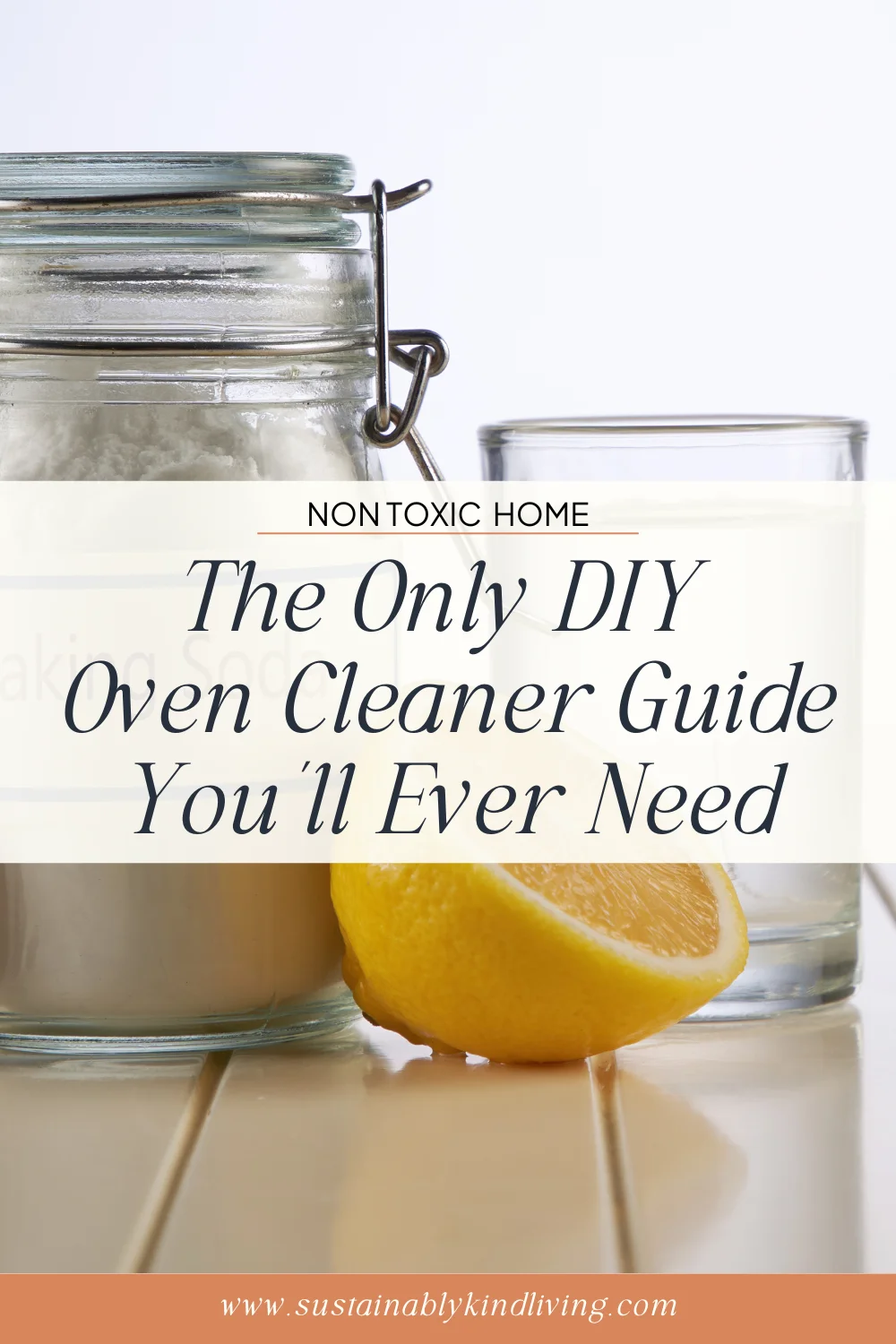

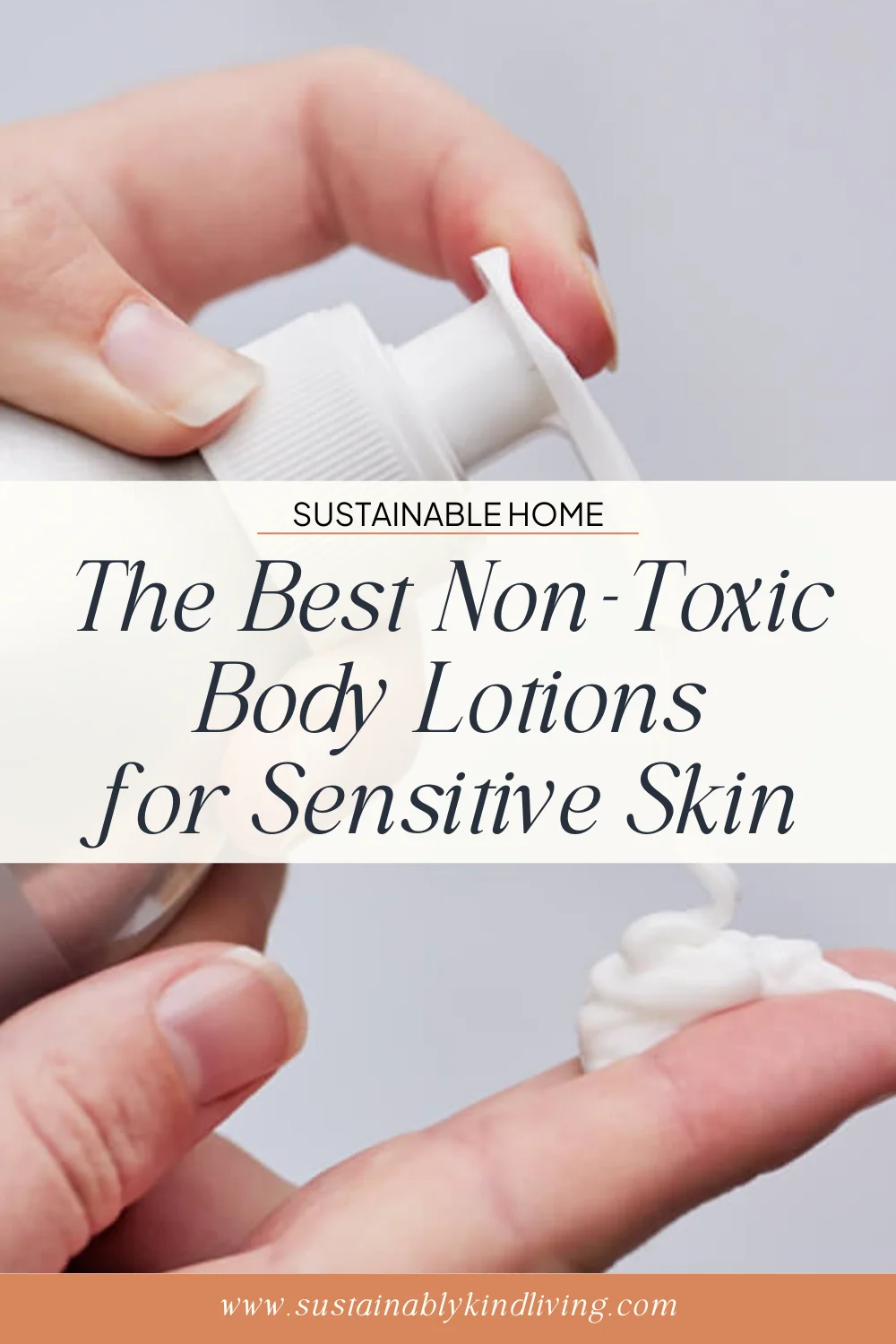

[…] artificial fertilizers. Worm castings generally fall under the category of organic and completely natural fertilizers, but they are more than just fertilizer in a technical sense. They are essentially soil additives […]